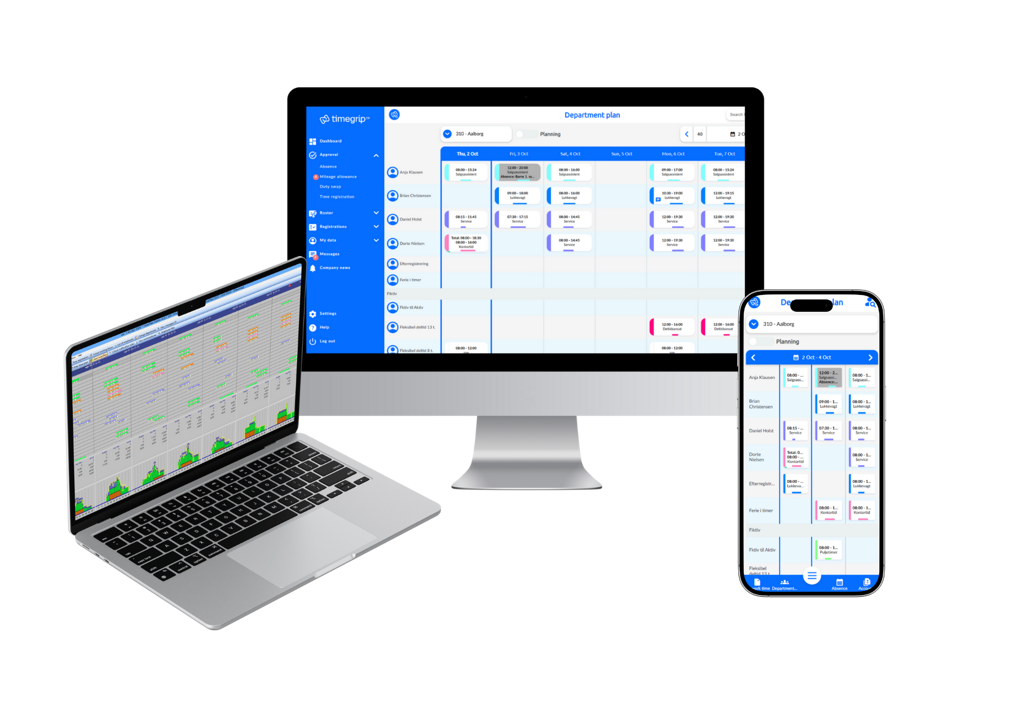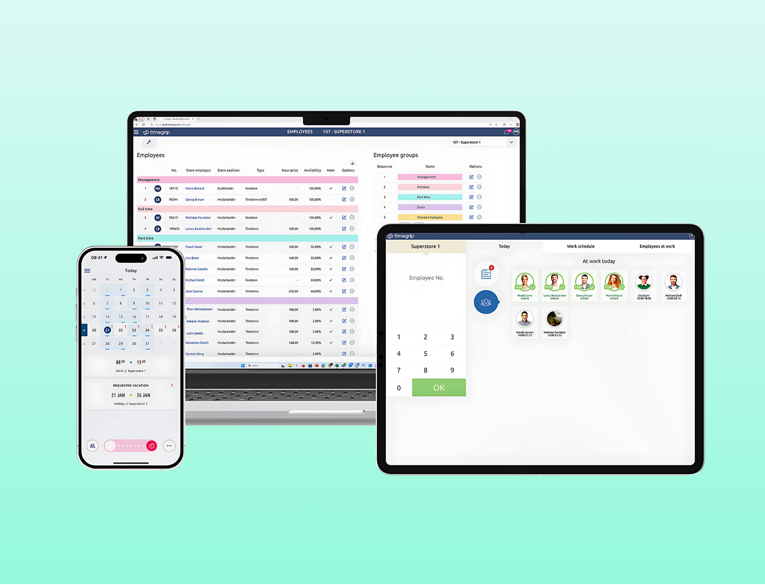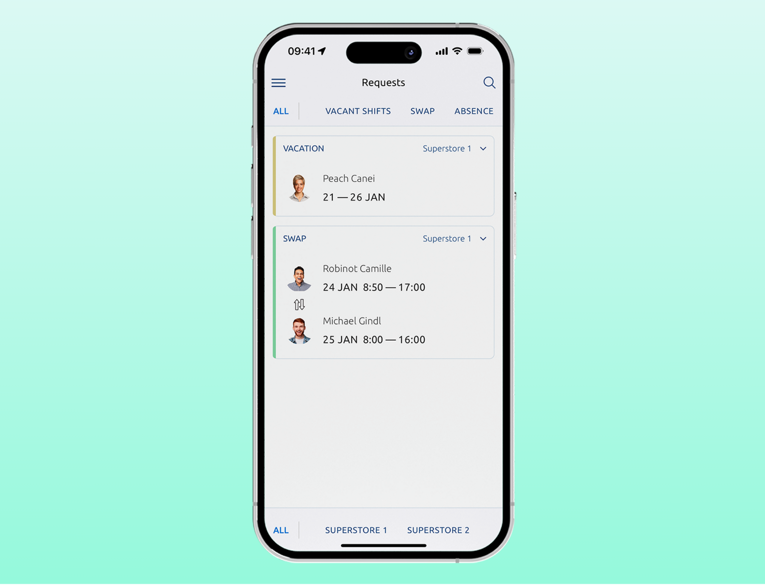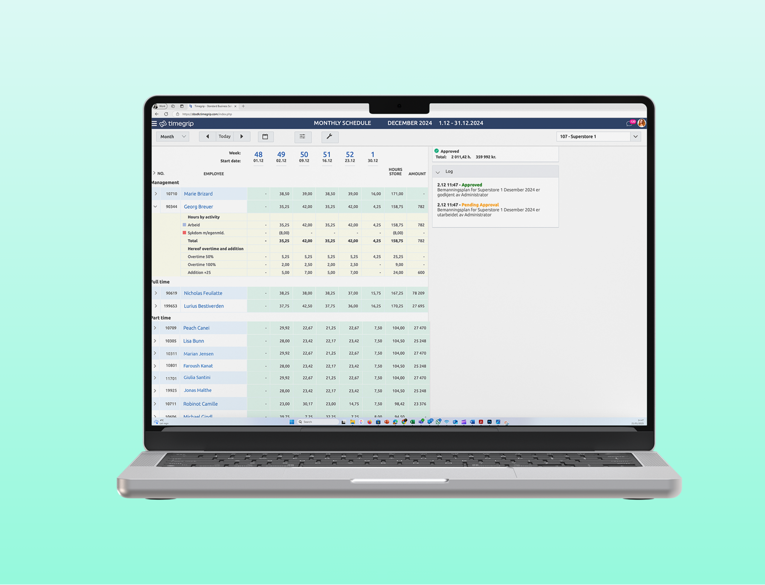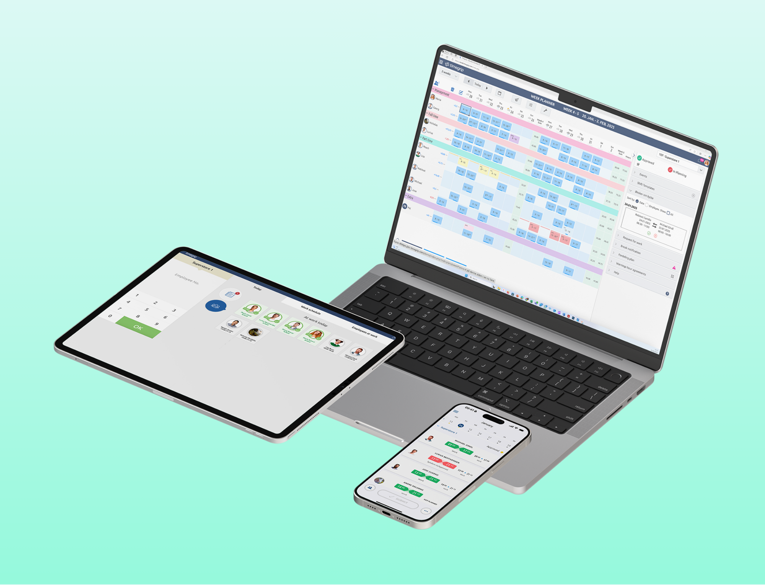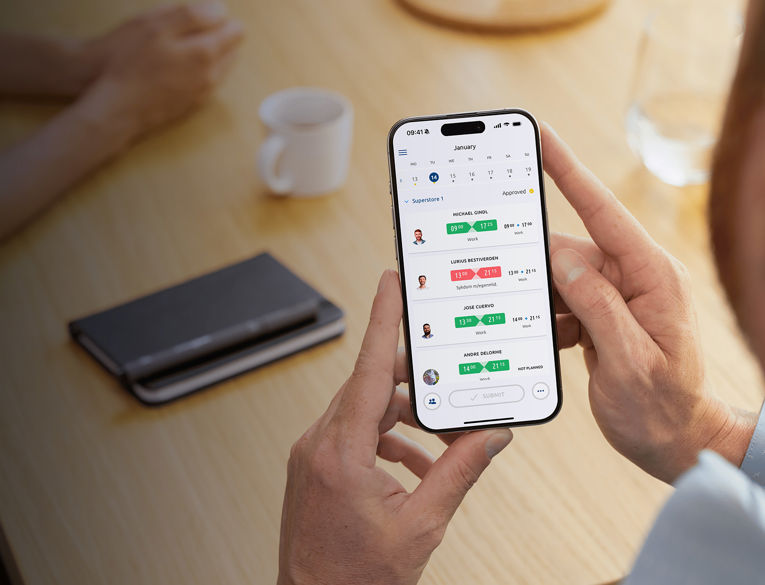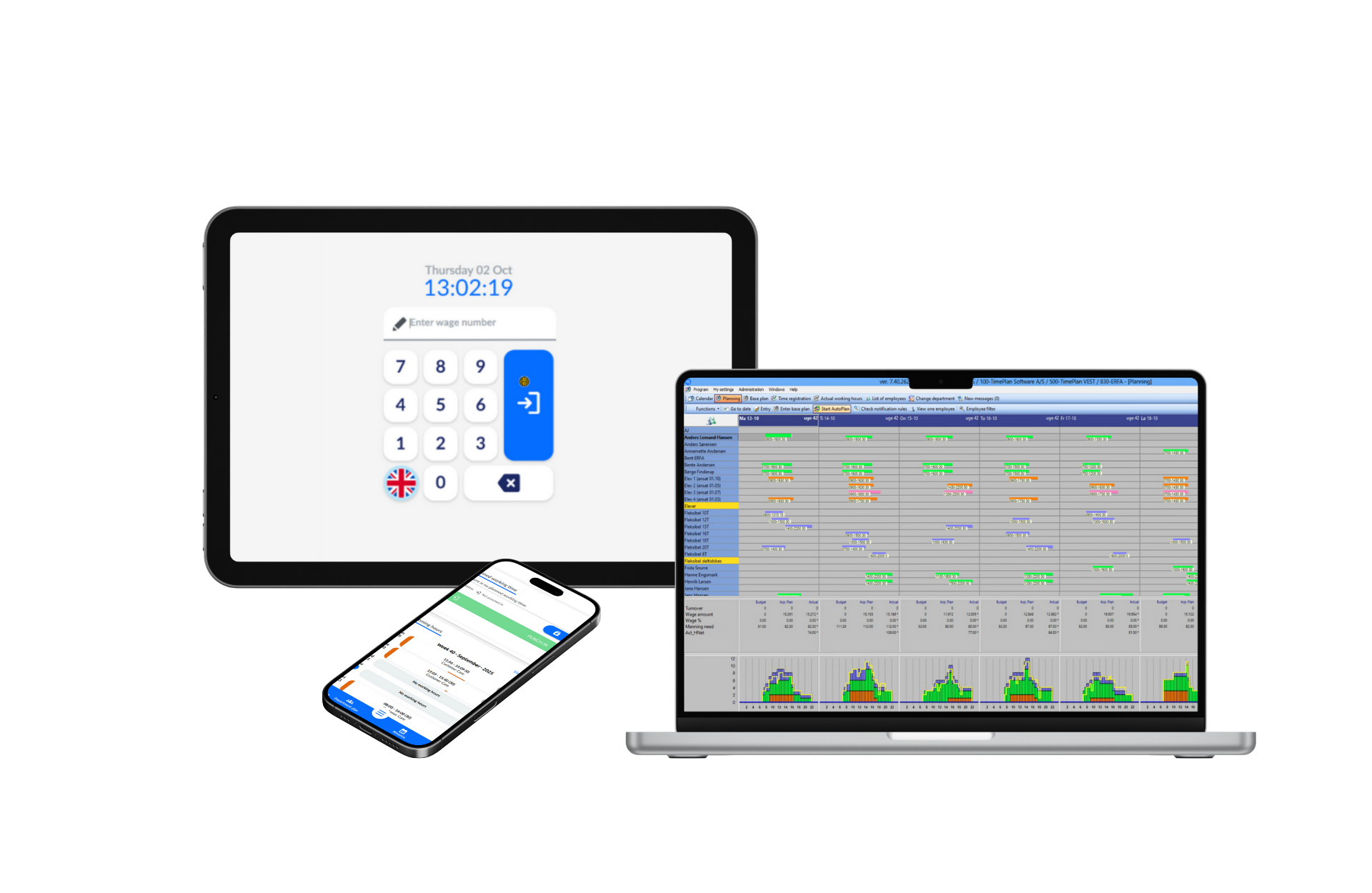


Smarter planning under constant development
-
We actively monitor AI advancements to identify the most impactful tools and techniques for workforce planning. Our goal is to seamlessly integrate these into our solutions to ensure smarter and more efficient scheduling.
-
Our development roadmap prioritizes AI-driven enhancements that anticipate future workforce management needs, ensuring our tools remain ahead of industry trends and user expectations.
-
We take a responsible approach to AI implementation, adhering to strict governance standards and regulatory requirements. This ensures that our solutions are reliable and compliant.
-
As we embrace AI, safeguarding your data remains a top priority. We incorporate robust security measures into every aspect of our development process, providing peace of mind for all our users.





AI and the Future of Workforce Management
Artificial intelligence (AI) is playing an increasingly significant role in workforce management, where staff scheduling and time tracking are evolving from manual, administrative processes into strategic tools that support efficient operations and smarter decision-making. The development is moving fast, and many organisations are already seeing how AI can help forecast staffing needs, optimise resources, and create more flexible and fair scheduling.
AI-driven workforce management is all about using data intelligently. By analysing historical patterns, seasonal variations, employee preferences, and external factors, modern algorithms can predict when additional staff are needed and when staffing levels can be reduced. This enables schedules to be created with greater accuracy, minimising both overstaffing and understaffing. At the same time, the integration of time tracking and planning data allows businesses to respond quickly to real-time changes — such as sickness, busy periods, or altered opening hours.
The progress of AI in workforce management is closely linked to digitalisation and automation. Instead of planning shifts manually or relying on gut feeling, AI-based systems can process vast amounts of data to suggest the most efficient solutions. This not only saves time but also ensures a more objective approach, where all employees are treated consistently according to rules, agreements, and working hours. Accurate time tracking, which also documents compliance with working time legislation, has become a key element in this development — particularly following the latest EU requirements for recorded working hours.
Another central aspect of AI-powered scheduling is the employee experience. When scheduling becomes more flexible and transparent, collaboration between employees and managers improves. Many modern systems allow staff to request shifts, swap hours, and monitor their working time in real time. This fosters higher engagement and greater satisfaction, as scheduling takes individual preferences into account while maintaining an overview for the business.
The future of workforce management is moving towards even tighter integration between scheduling, time tracking, and analytics. AI will increasingly act as an intelligent advisor that not only predicts staffing needs but also learns from past data and adapts to ongoing changes within the organisation. At the same time, business intelligence and analytics are becoming natural parts of the decision-making process, giving managers a clear overview of key metrics such as efficiency, absence, labour costs, and productivity.
Although technology is advancing rapidly, AI in workforce management is still about finding the right balance between automation and human insight. Systems can generate recommendations and calculations, but the best results are achieved when technology works hand in hand with experienced planners and HR teams who understand the company’s culture, employees, and goals.
AI-driven staff scheduling and time tracking are therefore not just about efficiency — they represent a shift towards a more data-driven and flexible way of managing employees and resources. With the right data and tools, workforce management becomes a strategic foundation for the workplaces of the future — where decisions are based on insight rather than intuition, and where AI helps businesses plan smarter, operate more efficiently, and improve employee wellbeing.
Gain deeper insight into AI and workforce management in our in-depth blog post: Workforce Management Trends 2026.

Working for Better Workday




